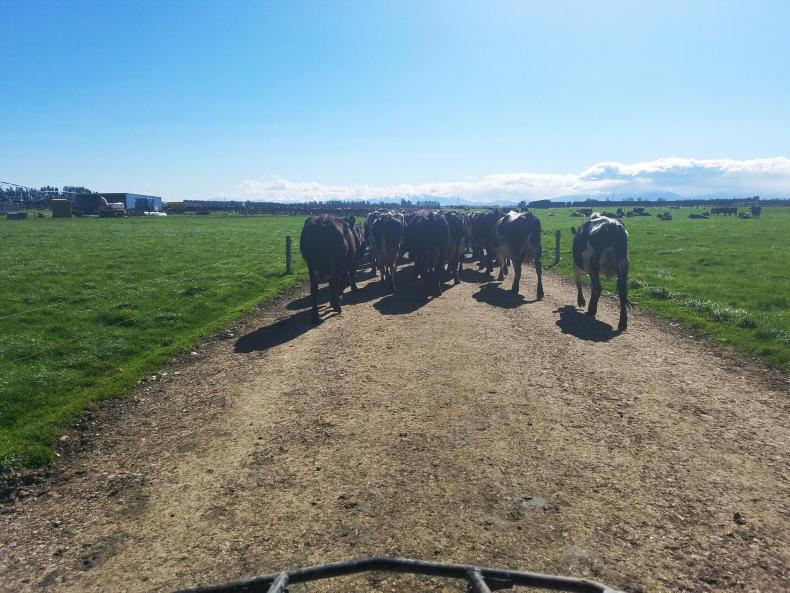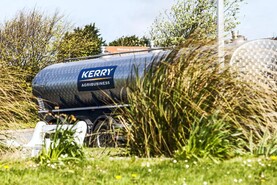I was raised on a small dairy farm in the hilly parish of Killanny, in the southeast corner of Co Monaghan.
I am a third year student at UCD, studying Dairy Business and currently doing work experience in New Zealand as part of my course.
I work at Dunlac Dairies, owned by John and Jackie Tanner and located in Dunsandle in Canterbury.
Dunlac Dairies milks 730 cows on 153ha. The herd is mainly a cross between Friesians and Jerseys. It also grows maize, barley, oats, fodder beet and kale on two run-offs (pieces of land which are too far away to graze) either side of the farm, one of which is 40ha and the other 60ha.
Daily activities
The herd is split into two main groups: cows and heifers and thin cows. A third smaller group is comprised of penicillin cows and colostrum cows. Morning milking starts at 5am, and it usually takes about four hours.
If you’re not milking, you have to get the cows and shift their break fences.
The afternoon milking starts at 2pm and again usually takes around four hours. Other jobs during the day involve feeding the calves milk and meal.
Calving and breeding
Calving finished the second week of October and the breeding season has now started.
Last week all heifers were inseminated. The heifers were synchronised and inseminated within three days. The heifers are only inseminated once and then the bull is let run with them till the end of the breeding season, which is at the beginning of January.
Cows are tail painted and checked every morning with the use of a mirror in the parlour, which is hung directly above the cow and can be viewed from where you stand when cupping on.
There is a three-way drafting system and cows that are in heat are drafted out. Cows are inseminated once a day.
High-input farming
It is a general assumption that New Zealand is a low-cost grass-fed system, however this is not the case here.
Dunlac is a high-input, high-output operation. At peak, cows average 2.5/2.6 kg/solids on 25 litres of milk. Something John attributes to their diet.
Lactating cows are fed 3kg of palm kernel and 1kg of wheat per day. They are also fed 2kg of molasses with magnesium and lime flour every milking, with that they also eat around 15 kg/dm of grass.
Over the winter the cows are fed on a high plane of nutrition, with the dry cows closest to calving fed maize and silage along with grass.

Cows further away from calving are fed fodder beet, silage, barley straw and palm kernel.
The replacement heifers are fed kale, palm kernel and barley straw.
Another reason why John maintains a high input is needed is to keep condition on the cows for the breeding season, by having cows with a body conditionscore of three he is able to keep his empty rate below 10%.
Low nitrogen bulls
John has bought semen from a low-nitrogen Jersey bull, Triplestar, which he used on all his heifers. It is believed that the offspring produce less nitrogen in their urine.
The offspring will have lower levels of milk urea nitrogen (MUN) which has a direct relation with nitrogen excreted in urine.
The results of this are not fully proven yet. If it is successful it could become very popular in Ireland, especially on farms that are highly-stocked and the farmer is under pressure due to nitrogen regulations.
It is claimed that these low-nitrogen cows can reduce nitrate leaching by up to 20% in 20 years.
The experience
Overall my experience working in New Zealand has been thoroughly enjoyable and I would definitely recommend it to anyone considering coming out.
You will get a great understanding of how to manage large scale work in an efficient manner.
Student blog: scale that gives you goosebumps in New Zealand
Student blog: working on a 1,250 head dairy herd in New Zealand






 This is a subscriber-only article
This is a subscriber-only article













SHARING OPTIONS: